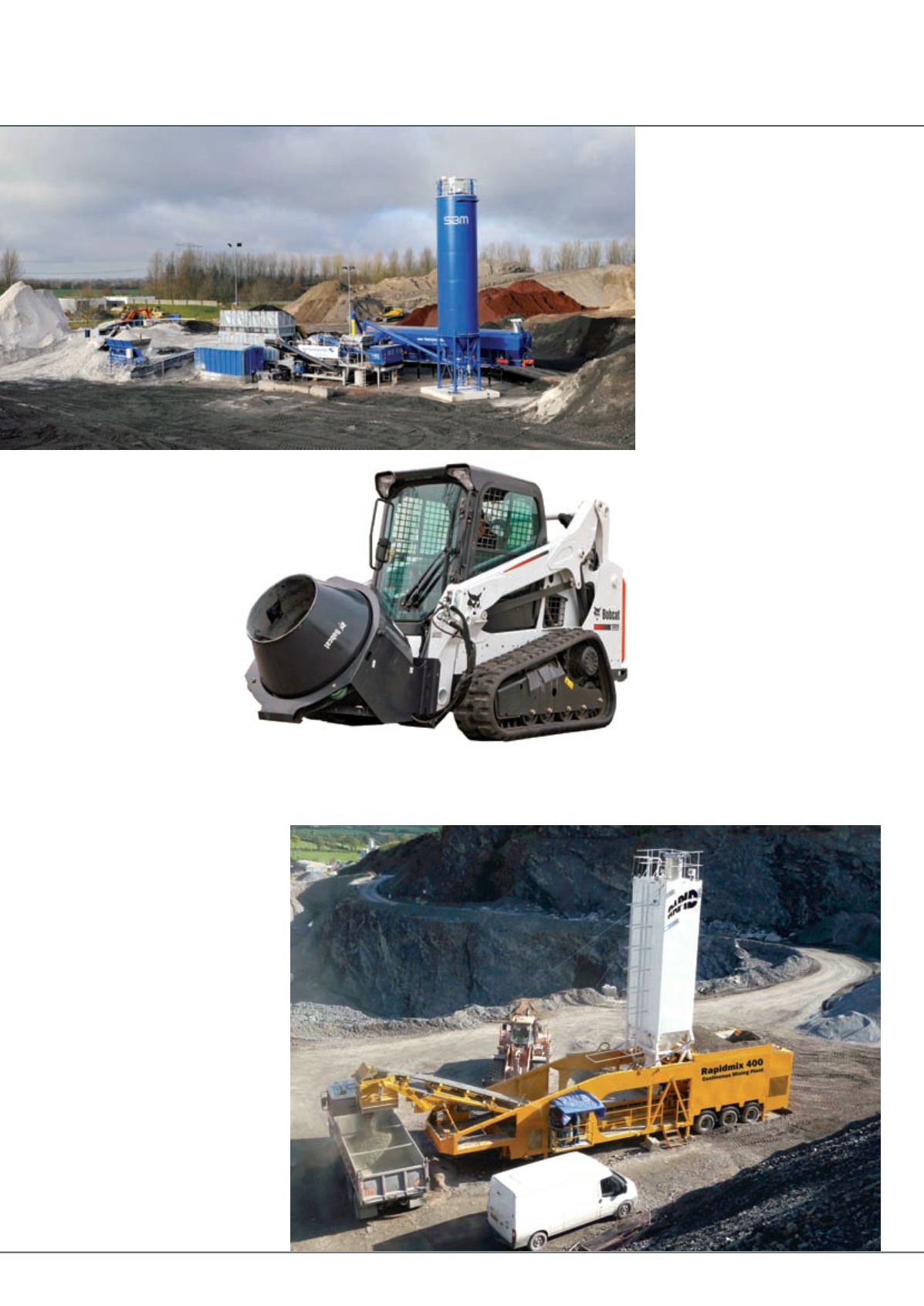
international
construction
july-august 2013
MIXING TECHNOLOGY
50
Adding to the mix
SBM, for instance, has concentrated on bespoke solutions
for its customers, and developed a mobile
concrete batching plant, the Euromix
400C, for Dutch contractor Van
Gansewinkel.
The plant and has been designed
to process waste materials into
concrete – the contractor then
stores this concrete mix on landfill
sites. Due to local regulations,
certain loose waste material cannot
be deposited directly into landfill as it
contains substances that could leach into ground water.
By mixing the waste material with cement and producing
concrete, it binds the substance for long-term storage as landfill.
The plant is required to work continuously with an output of
over 400 tonnes per hour and comes with
an independent generator.
SBM said the demands made on the
control system could not be met by
conventional devices, so it developed
a microprocessor control system to
control the plant by laptop and WLAN.
This system meant that all data from
the plant was immediately available for
further electronic data processing, and
allowed the concrete mixing plant to be
supervised online.
To reduce service and maintenance
works, a specially designed high-pressure
cleaning system was also installed –
reducing running operation costs,
according to SBM.
Meanwhile, the new Rapidmix 400CW
from Rapid International aims to offer
higher production rates. It incorporates
a 1200 mm belt conveyor between the
aggregates hopper and the continuous
mixing chamber, and offers full weighing
options for all materials as well as
automated record keeping.
The first customer for the Rapidmix
400CW in the US was Texas-based
Rollcon. The new machine has been
put to work on the latest phase of the
Port of Houston development project,
producing up to 400 tonnes of material
per hour.
Rapid
International
is
also
reporting interest in its cement treated base (CTB) mixing
technology – a strong, frost-resistant road base.
CTB is comprised of native soils, gravels or
manufactured aggregates mixed with cement
and water in either a continuous flow or batch-
type mixing plant. The resulting material
is said to provide a weather resistant base
which gains strength with age.
Rapid International said CTB can also
distribute loads over a wider area, reducing
the stresses on the subgrade. It is typically
used as a pavement base for roads, streets,
car parks, airports, materials handling and
storage areas.
Increasing the use of recycled pavement,
and reducing the amount of energy needed
to produce high quality asphalt and concrete
will continue to be key focusses for manufacturers of mixing
technology. It will be interesting to see how the latest materials
shape equipment developments in the future.
iC
Rapid International has launched a
new, continuous concrete mixing
plant in North America – the
Rapidmix 400CW
SBM developed a self-sufficient
mobile concrete batching plant, the
Euromix 400C, for Dutch contractor Van
Gansewinkel
Bobcat’s concrete mixing attachment for
compact loaders has a 270 litre capacity and
can be remotely controlled.


